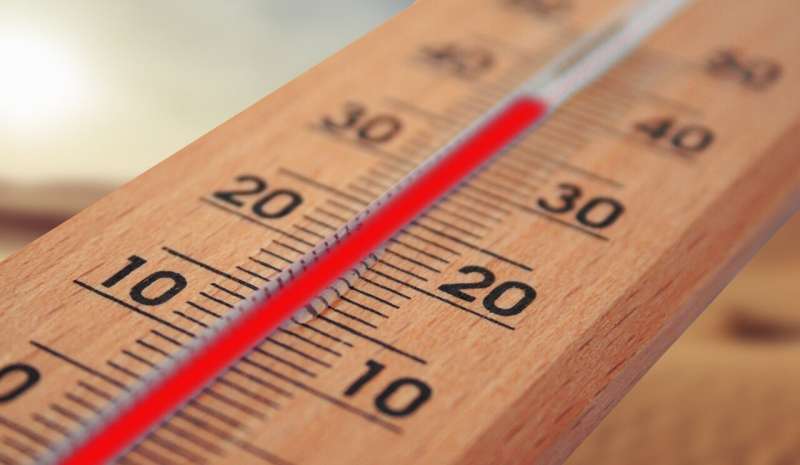
Source: Pixabay/CC0 Public Domain
Extreme temperatures, which are becoming more common due to increasing global climate change, are associated with higher rates of missed primary care appointments, according to a recent study. published study by researchers at Drexel University in the American Journal of Preventive Medicine.
The researchers found that rates of missed appointments increased by 0.72% for every 1°F decrease in daily maximum temperatures below 39°F and increased by 0.64% for every 1°F increase above 89°F. Patients aged 65 and older and those with chronic conditions had stronger associations with increased rates of missed appointments.
“These findings should be a clarion call for clinical teams, including their practice managers, to adapt and ensure patient access to care before the problem worsens,” said lead author Nathalie S. May, MD, a professor at Drexel University College of Medicine.
The team tallied 1,048,575 appointments from 91,580 adult patients at 13 university outpatient clinics in Philadelphia from January 2009 through December 2019 and linked them to daily maximum temperature and precipitation data from the National Oceanic and Atmospheric Administration. The group controlled for seasonal trends, sociodemographic characteristics and chronic disease status.
“During the COVID pandemic, telemedicine has become an integral part of health care delivery,” said Drexel College of Medicine Clinical Associate Professor Janet H. Fitzpatrick, MD, one of the study’s lead authors. “With worsening climate change, this study supports the case for continued telemedicine coverage as an option to ensure patients receive the care they need.”
Telemedicine has been associated with a 13% lower chance of missed appointments in a survey of patients in government-recognized health centers.
The Earth’s temperature has risen an average of 0.11 degrees Fahrenheit per decade since 1850, though the rate of warming has more than tripled in recent decades: 0.36 degrees per 10 years since 1982. Some estimates suggest the average global temperature could rise by as much as 9 degrees Fahrenheit. in the next 76 years.
“Extreme temperatures due to climate change threaten the health and well-being of all patients with chronic conditions,” May said. “We must be especially vigilant for our most vulnerable patients who may not have the resources to combat extreme heat or extreme cold. By studying the impact of climate change on primary care utilization, we hope to promote policies that support health and equity in the face of the negative effects of climate change, particularly in cities.”
The researchers went a step further and looked at zip code data from the American Community Survey’s Social Deprivation Index (SDI). This index is a measure of deprivation or social disadvantage that takes into account seven characteristics, such as poverty rate, education level, percentage of people living in rental housing and other factors. However, they found no statistically significant association between a higher SDI and the number of missed appointments.
While the lack of an association with SDI was a surprise to the authors, 87% of patients in the study had private insurance. As such, the authors caution that this measure may not be an accurate way to assess an individual patient’s SDI and how it affects their likelihood of missing medical appointments.
Numerous studies show that climate change is associated with a range of health problems, including chronic kidney disease, asthma, heart disease, violent crime, worsening mental health and other conditions.
The current study is one of the very limited data available suggesting that extreme weather can affect the attendance of primary care visits. The data in this article contrast with a 2014 article in the journal Decision Support Systems that found no significant link between the weather and missed primary care appointments.
Additional research into the causes of appointment no-shows shows that factors such as previous no-shows, day of the week, use of automatic reminders, and average temperature can play a role in attendance.
According to the authors, future research would benefit from evaluating the influence of access to transportation on the number of missed appointments.
“When patients miss appointments, they harm their own health and impact others,” Fitzpatrick said. “No-shows waste valuable appointment time that could be used by others anxiously awaiting appointments and can lead to lower patient satisfaction due to longer wait times. It also makes our nation’s healthcare system more expensive, due to increased use of emergency departments and urgent care visits, and poorer management of chronic diseases, leading to more medical care needed in the future.”
In addition to May and Fitzpatrick, Adrienne Willard, Janelle R. Edwards, Meera N. Harhay, Leah H. Schinasi, and Janet Matthews contributed to this research.
More information:
Janet H. Fitzpatrick et al, Time series analysis: Associations between temperature and primary care use in Philadelphia, Pennsylvania, American Journal of Preventive Medicine (2024). DOI: 10.1016/j.amepre.2024.06.014
Quote: Climate change could keep patients from attending vital doctor appointments (2024, July 18) Retrieved July 18, 2024 from https://medicalxpress.com/news/2024-07-climate-patients-vital-doctor.html
This document is subject to copyright. Except for fair dealing for private study or research, no part may be reproduced without written permission. The contents are supplied for information purposes only.
 Healthy Famz Healthy Family News essential tips for a healthy family. Explore practical advice to keep your family happy and healthy.
Healthy Famz Healthy Family News essential tips for a healthy family. Explore practical advice to keep your family happy and healthy.


